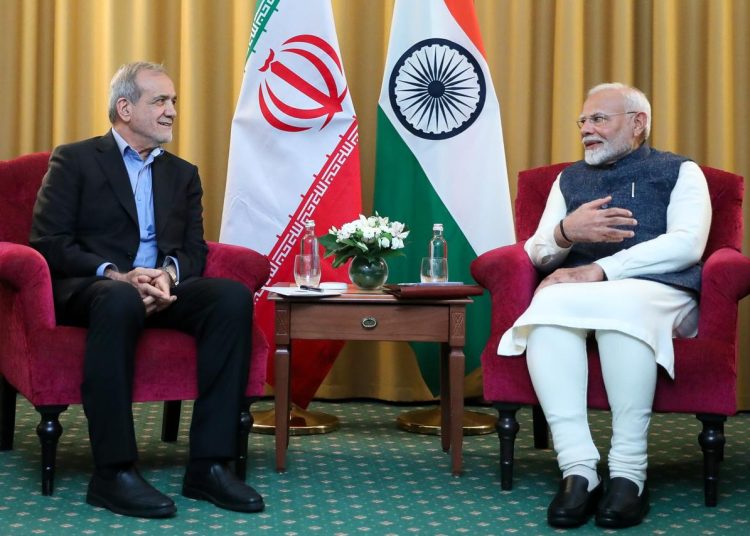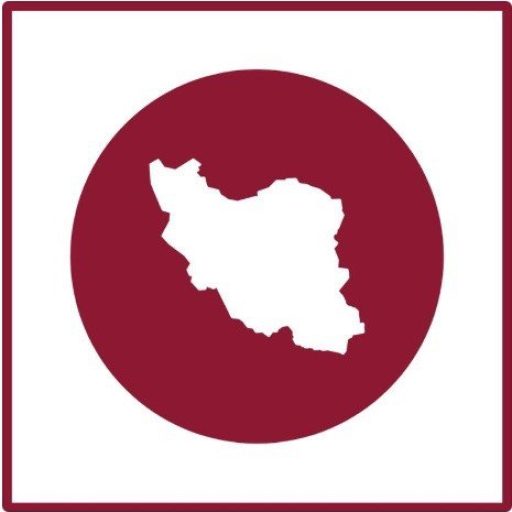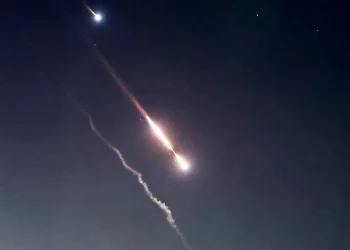The recent inaugural meeting between Iranian President Masoud Pezeshkian and Indian Prime Minister Narendra Modi in Kazan marks a significant point in the relationship between Iran and India. As both nations navigate the complexities of regional dynamics and global geopolitics, their collaboration holds the promise of mutual growth and enhanced stability in the region.
BRICS Membership and Enhanced Cooperation
Iran’s induction as a full member of BRICS (Brazil, Russia, India, China, and South Africa) has opened new avenues for further collaboration with India. This membership symbolizes a collective effort to foster unity among emerging economies and to counterbalance prevailing global power structures. During the BRICS summit in Kazan, Presidents Pezeshkian and Prime Minister Modi underscored the importance of this platform in enhancing economic ties and addressing regional challenges. The alignment within BRICS offers both countries a unique opportunity to advance their shared interests in economic development and regional stability.
Strategic Importance of Chabahar Port Development
The development of the Chabahar Port stands as a cornerstone of Iran-India cooperation. In May 2024, both nations signed a decade-long agreement to develop and manage the Shahid Beheshti terminal at Chabahar. This strategic port is envisioned as a gateway that boosts trade and connectivity, providing India with direct access to Central Asia and Afghanistan, bypassing the need to route through Pakistan. The port has witnessed an increase in vessel and container traffic, signaling its growing role in regional trade. Ongoing efforts to acquire new equipment and enhance infrastructure reflect a mutual commitment to realizing the full potential of this project.
Addressing Regional Security and Middle East Tensions
Regional security concerns, particularly the ongoing Israeli aggressions against Gaza and Lebanon, have been a notable factors in Iran-India dialogues. The escalating tensions and humanitarian crises in areas like Gaza and Lebanon are matters of profound concern for both countries. India, known for its diplomatic relations across the spectrum in the Middle East, is positioned to play a role in de-escalation. Prime Minister Modi emphasized the need for peaceful resolutions through diplomacy, while President Pezeshkian reiterated Iran’s stance on pursuing peace and stability in the region. Both leaders expressed a shared belief that conflicts hinder the development and prosperity of nations.
Strengthening Economic and Trade Relations
Economic cooperation remains a vital component of Iran-India relations. The trade between the two nations has seen steady growth, with India exporting goods worth $144 million to Iran in July 2024—a 4.82% increase from the previous year. Key Indian exports include rice, tea, pharmaceuticals, and machinery, while imports from Iran feature dry fruits and chemicals. Both countries are actively exploring new sectors to diversify and strengthen their economic partnership. The potential for collaboration in areas such as energy, technology, and infrastructure development is significant and offers mutual benefits.
Diplomatic Engagements and Future Collaborations
High-level diplomatic engagements have played a crucial role in advancing bilateral relations. The meeting between President Pezeshkian and Prime Minister Modi in Kazan was not only their first encounter but also a platform to discuss strategic initiatives like the International North-South Transport Corridor (INSTC). These engagements highlight the importance of continuous dialogue in navigating the complex geopolitical landscape. The leaders expressed mutual respect and a desire to build upon the historical and cultural ties that bind the two civilizations.
Challenges and Impediments in Cooperation
Despite the optimistic outlook, Iran-India relations face several challenges:
- Impact of International Sanctions: The reimposition of U.S. sanctions on Iran after the withdrawal from the Joint Comprehensive Plan of Action (JCPOA) in 2018 has hindered bilateral trade, especially in the energy sector. Indian companies are cautious of engaging in activities that might attract penalties, complicating efforts to restore full-scale energy cooperation.
- Regional Security Complexities: The volatile security situation in the Middle East requires India to balance its diplomatic relations carefully.
- Economic and Logistical Barriers: Financial transactions are complicated by the lack of direct banking channels due to sanctions. Infrastructure projects like the Chabahar Port, while promising, face delays stemming from funding issues and bureaucratic hurdles.
- Strategic Divergences: While there is alignment on many fronts, strategic priorities sometimes diverge. India’s growing ties with the United States and other Western states may occasionally conflict with Iran’s foreign policy objectives.
- Influence of External Powers: China’s increasing economic footprint in Iran, exemplified by a 25-year strategic cooperation agreement, introduces competitive dynamics. India must navigate this landscape carefully to maintain and enhance its cooperation with Iran.
- Domestic Political Dynamics: Changes in domestic politics and leadership in either country, particularly in India, can lead to shifts in policy and priorities. Such changes may result in the reevaluation of ongoing projects and agreements.
Looking Ahead: Opportunities for Mutual Growth
The shared history and cultural affinities between Iran and India provide a strong foundation for deepening ties. Both countries recognize the potential benefits of collaboration in promoting regional connectivity, economic development, and security. Initiatives like the development of the Chabahar Port and participation in multilateral platforms such as BRICS and the INSTC are testaments to their commitment.
The leaders have expressed a clear intent to overcome challenges through dialogue and mutual cooperation. President Pezeshkian emphasized Iran’s readiness to develop relations with India, while Prime Minister Modi conveyed India’s eagerness to expand cooperation under the current Iranian administration.
Conclusion
The Iran-India relationship is at a pivotal juncture, with opportunities to significantly enhance cooperation across various sectors. By addressing challenges collaboratively and capitalizing on shared interests, both nations can contribute to regional stability and prosperity. The recent meeting in Kazan symbolizes not just the beginning of a new beinning in bilateral relations but also the potential for these two great civilizations to shape a more connected and peaceful region.






